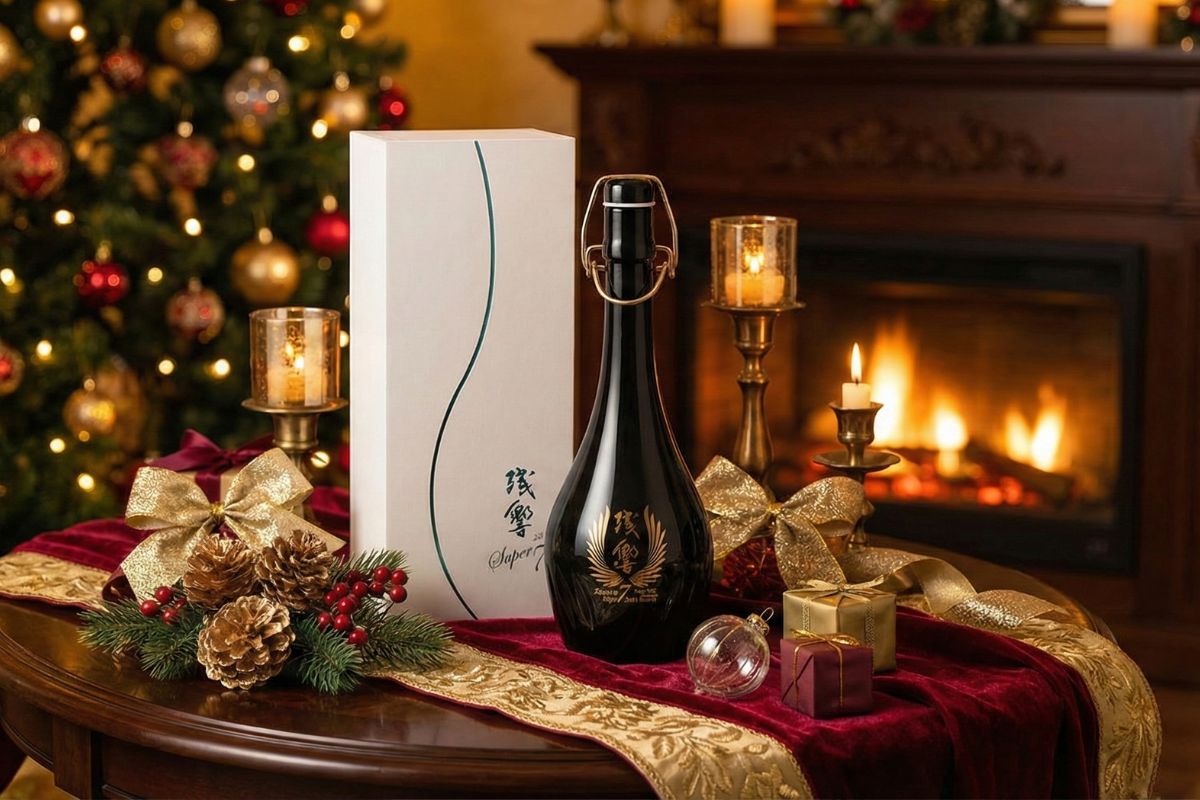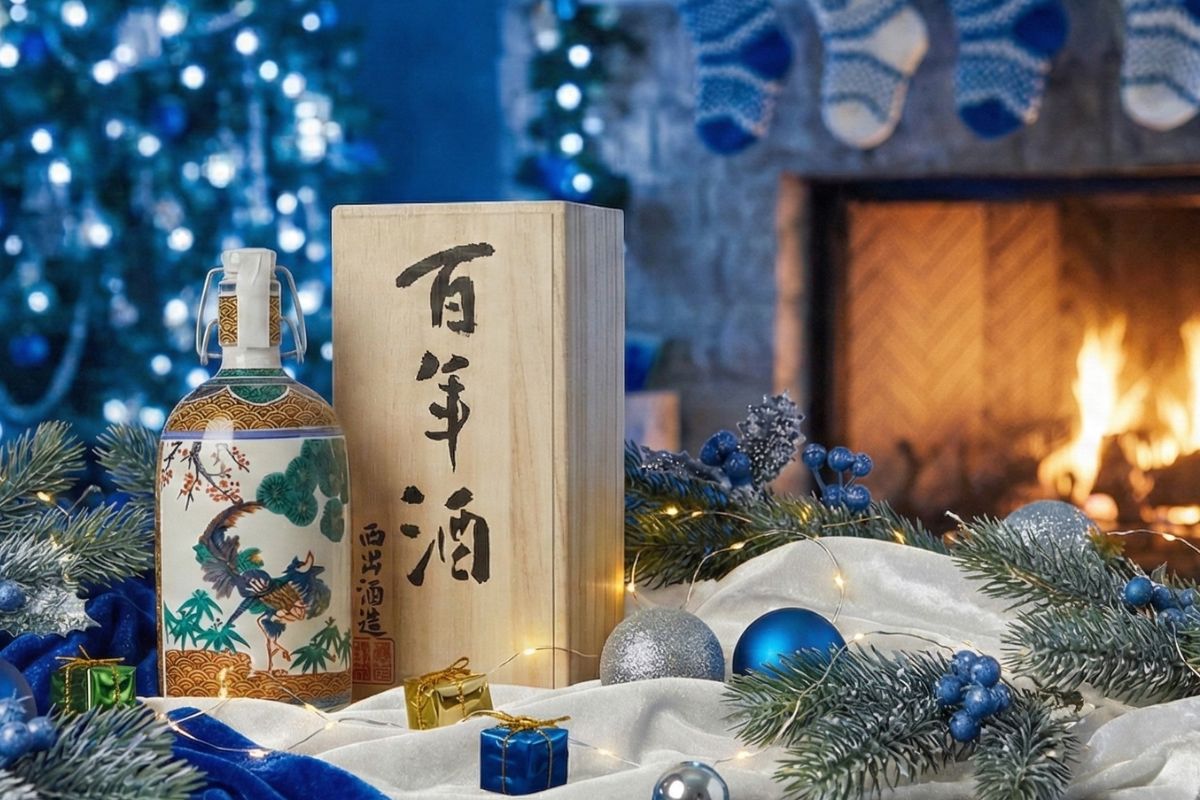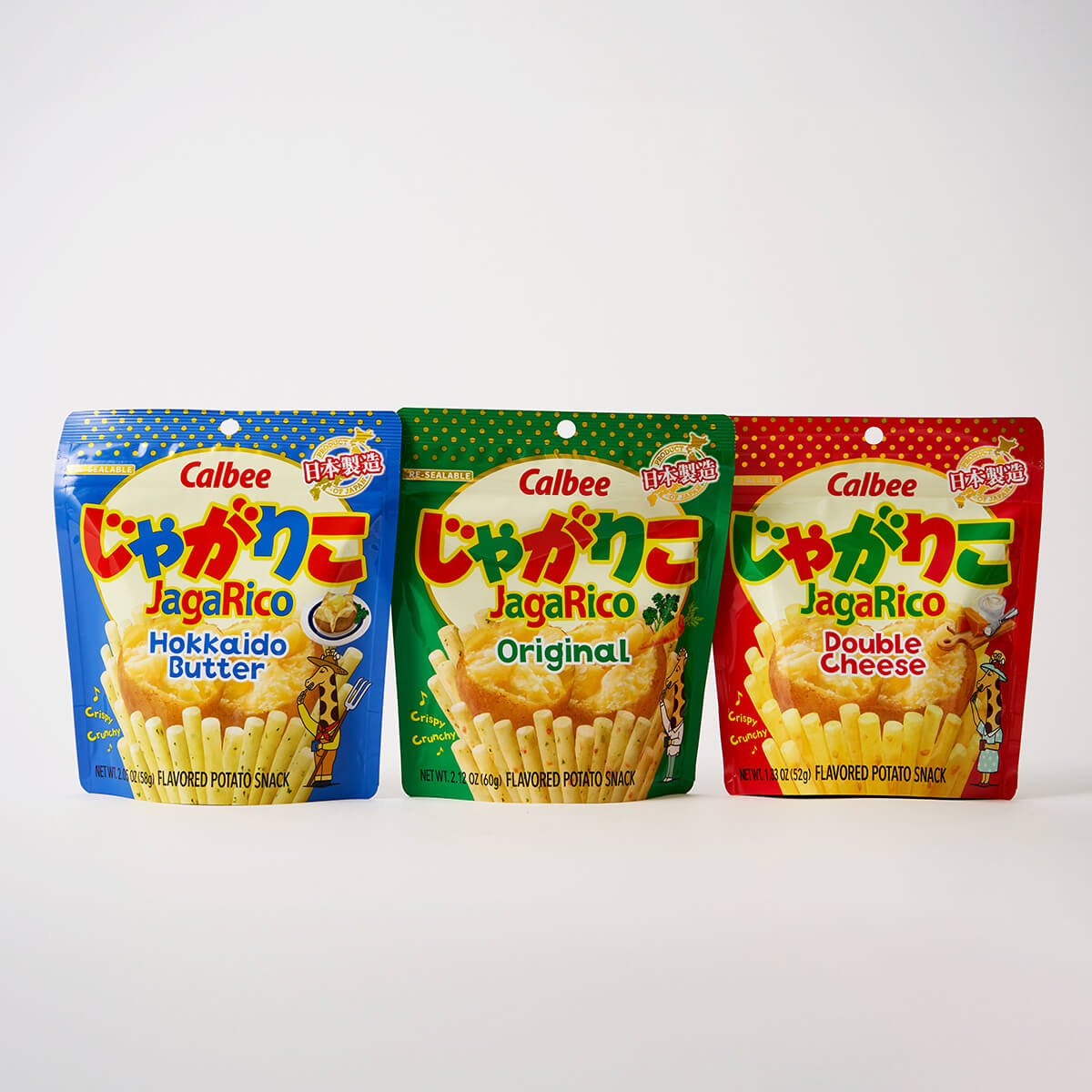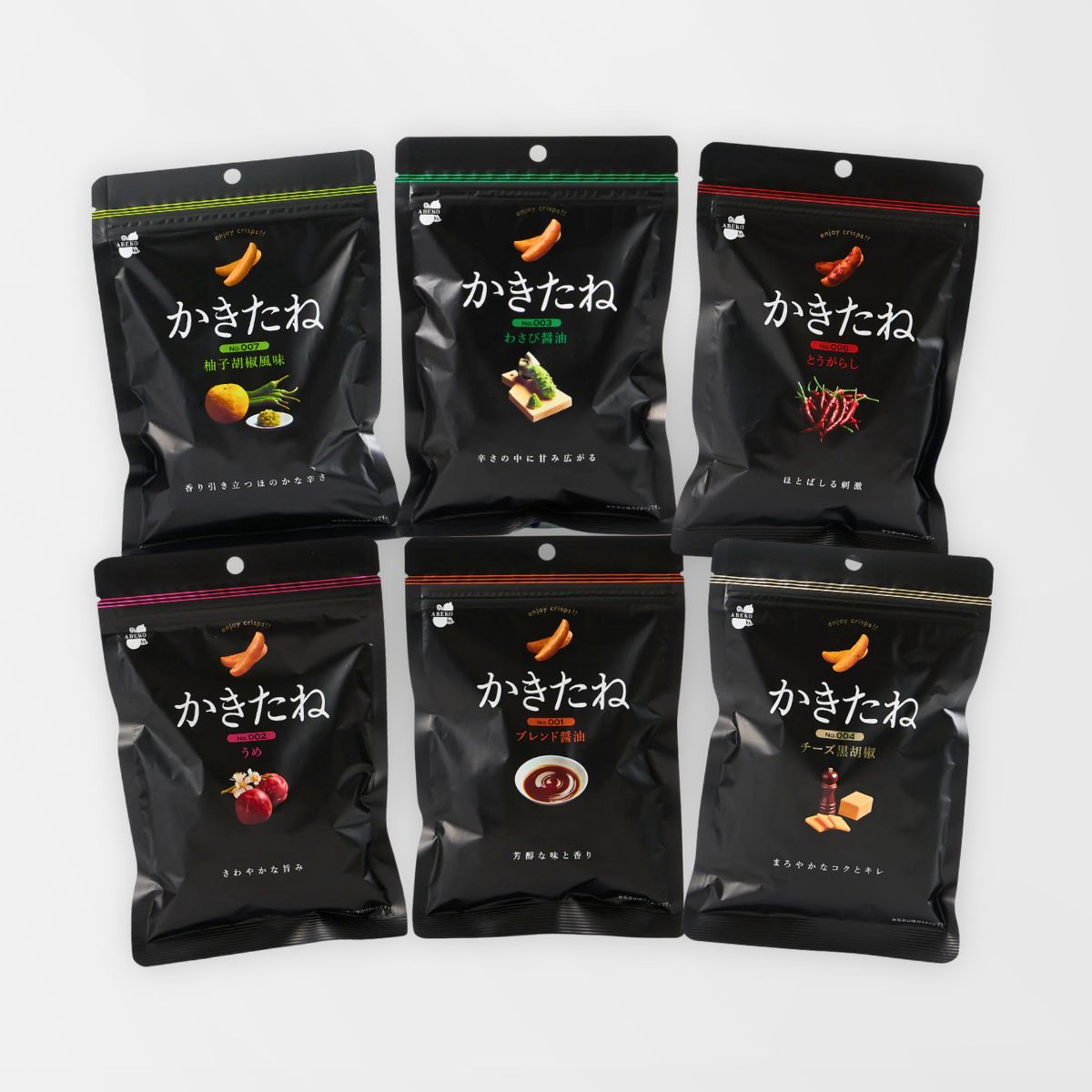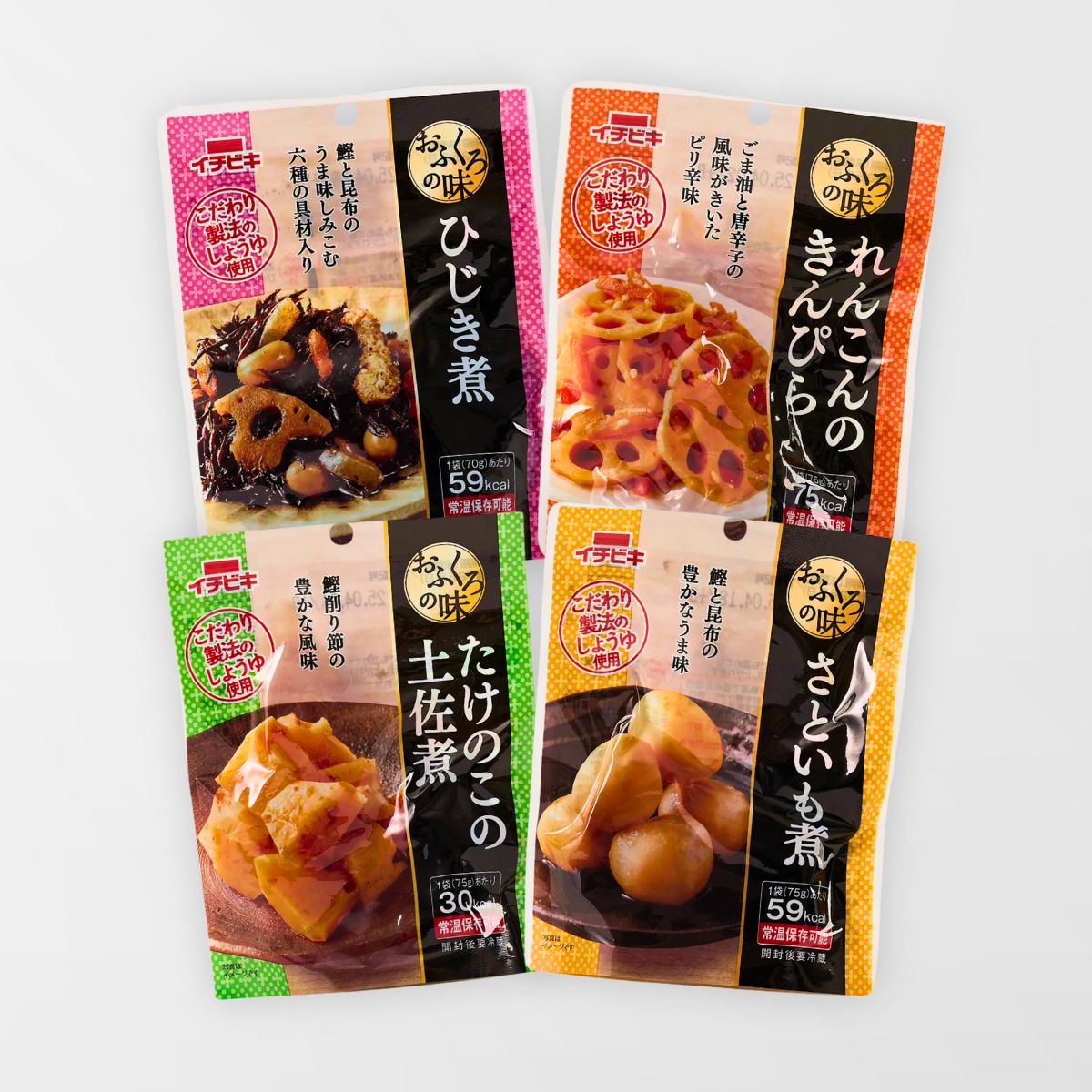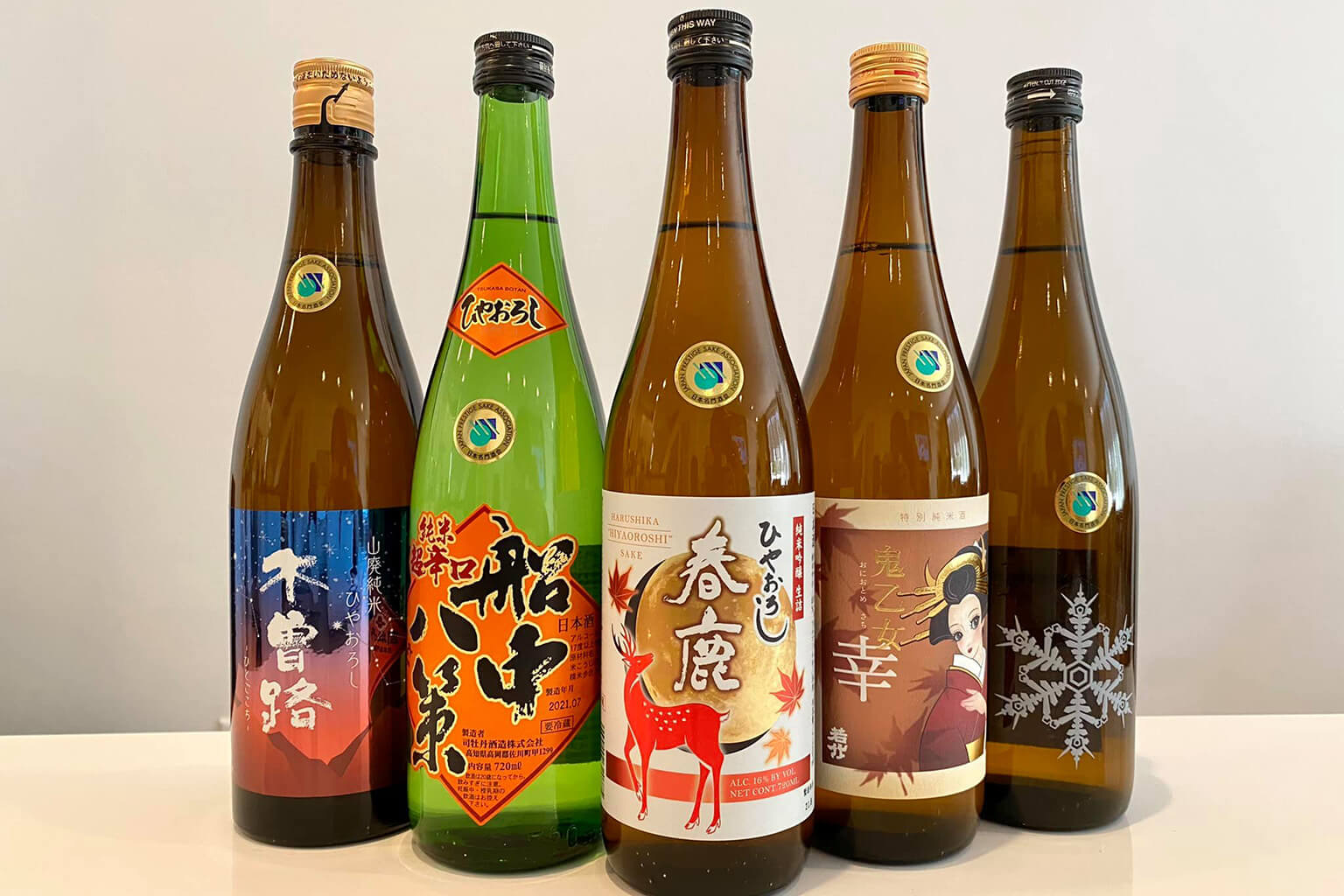While there are many sake breweries with a long history in Fukushima, Ninki Brewing Company started its brand in 2007. The president, Yujin Yusa, challenges himself to revive the traditional kioke jikomi (sake brewed in wooden tanks) methods yet keeping the affordable price for customers to enjoy his sake at “any occasion.”
One of the newest sake brewery in Japan
Mimi: I understand Ninki Brewing Company is a very new brewery, having only been started in 2007. Can you tell us more about why you decided to start a new brewery in Fukushima, a prefecture that has many breweries with long histories?
Yujin: Ninki actually has roots from 120 years ago, during the end of the Meiji period. 2007 is just when I took the reins. Before 2007, I was the president of my family’s brewery, Okunomatsu Brewing Company. The brewery that would become Ninki wasn’t doing well, so I bought ownership and turned it into Ninki Brewing Company in 2007.
I decided to buy the brewery because, unlike my family’s brewery, not only did it have a license to brew sake, but to make shochu, liqueur and spirits as well. The license to make shochu was a big factor because there are a limited number of licenses that are issued in Japan, so it would have been near impossible to get one otherwise.
Because the brewery already had all of these licenses, I thought the work we could do would be interesting and diverse, which is what led me to invest in the brewery. So really, I guess my answer is that I started Ninki Brewing Company because I thought I would have fun doing something that is different from what I was doing at my family’s brewery.
Mimi: Are there any goals within the realm of sake-making that you’ve set for yourself?
Yujin: Well to put it simply, there are plenty of traditional sake breweries across Japan, so as a new brewery, I don’t think we have an obligation to make traditional sake. The word “new” has several different meanings for me. People’s lifestyles have changed a lot between when I first entered the sake industry nearly 30 years ago and now.
Internationalization has affected all aspects of our lives, including the food we eat. So making sake for modern life is a theme I incorporate in our sake-making. Many older breweries strive to make sake that is timeless and unchanging, and I think that’s very important. But I also think it’s fine if there’s a brewery that only does new things, too. So that’s the concept of our brewery, to forego tradition and focus on the new.
Sake that are best enjoyed in a wine glass
Mimi: What are some examples of non-traditional, new ideas for sake-making?
Yujin: Well, I love sake that you can drink from a wine glass. I’m sure you’ve seen the traditional cups that are used when tasting sake. They look like yunomi tea cups with a janome (bullseye) pattern at the bottom. In the old days, appraisers would use the pattern to help judge the color of the sake. Also, traditional sake didn’t usually have a strong fragrance. As such, sake wasn’t really judged by its aroma. So really, taste was what sake makers focused on back then.
However, in the last 30 years, there have been many newly developed sake yeasts. It’s the yeasts, not the rice, that create a sake’s aroma. With these new yeasts, we got a new range of aromas. These aromas are wasted if you drink from a cup that isn’t made to appreciate them.
Mimi: How come a wine glass is suitable to appreciate the aroma?
Yujin: In the case of wine, grapes undergo a process called single fermentation. The flavor of the wine is 70% determined by the kind of grapes used. In sake, however, rice undergoes a process called multiple parallel fermentation, so it’s said that the flavor of sake is only 20−30% determined by the kind of rice used. Since the flavor of wine is 70% determined by the kind of grapes used, there will be both good and bad aromas characteristic of each grape. So I think wine glasses were made to accentuate the good aromas and downplay the bad aromas.
Yujin: In sake, though, there wasn’t really a concept of showcasing its aroma traditionally. But as sake has become more associated as a drink to have with meals and the range of aromas that could be created has grown, I started thinking sake could be even more enjoyable if we could accentuate the good aromas while masking the unwanted ones because, just like wine, there are both good and bad aromas in all sake.
Plus with internationalization, people began to compare sake and wine more and more, so I wanted to find a vessel that could showcase sake on the same level as wine. I thought the wineglass was a great fit for that, and so now we strive to make sake that is best suited for enjoyment in a wine glass.
Did you know that there’s a competition called The Fine SAKE Awards, Japan? The competition honors drinking sake in a wine glass and assesses the quality of sake by specialists who value the advantage of sake in a wine glass.
Mimi: Yes, I’ve heard about it!
Yujin: I actually started that competition and host it every year.
Mimi: That’s amazing! What made you start the competition?
Yujin: I came up with the idea as a way to energize the sake industry and bring together breweries across Japan. I reached out to Riedel, the Austrian wineglass maker, to sponsor the competition. I explained to them how the experience of drinking sake changes when drinking from a wine glass and also how sake in Japan has evolved, and how it’s impossible not to see those things when drinking from a wine glass. That was the reasoning behind starting the competition. We’ve entered our products and won awards, but even in years where we didn’t win, being able to see the winners and learning from them has really made the effort worth it.
Bringing back the kioke jikomi sake
Mimi: How fascinating. It’s now become one of the largest sake competitions in Japan!
Yujin: Some other new concepts we’ve worked on are kioke jikomi, (sake brewed in wooden tanks, a casual daiginjo and a sparkling sake. Wooden tank sake has a reputation for being old and traditional, but that’s actually not the case. While other luxury drinks from around the world are historically fermented in wooden casks, the Japanese government actually banned the use of wooden tanks for brewing after WW2. So wooden tank sake disappeared from Japan for a period.
The reason we wanted to revive it was because of our vision of sake that can be enjoyed in a wine glass. When drinking from a wine glass, many wine lovers agree that having the barrique flavor from the cask adds to the experience. With sake as well, the barrique flavor isn’t as noticeable in traditional choko, but in a wine glass, the flavor and aroma are accentuated, and that lends itself to a rich, luxurious experience. Our wooden tank is made of Japanese cedar.
Mimi: The smell of cedar is really wonderful. I love the aroma of cedar in taru sake and I think a lot of our customers in the U.S. enjoy it as well. We interviewed Choryo Brewing Company the other day and we learned the history of the taru sake method.
Yujin: Taru sake is definitely great, but I want to just make it clear that this isn’t a taru sake. The wooden tank or kioke sake is fermented in these tanks for just a month, so the aroma of the cedar probably isn’t noticeable unless someone were to mention it. If you were to drink it from a wine glass, then you might notice it faintly.
To prevent oxidation, we store the sake in bottles after fermentation and pressing. So we don’t actually have any storage tanks at the brewery. You might see large storage tanks at other breweries, but because it accelerates oxidation we got rid of them at Ninki. We only have the fermentation tanks at the brewery. I guess that’s another thing we do differently here.
Yujin: As for our casual daiginjo, we sell a 720ml bottle here in Japan for ¥1,260 (approximately $11). We created it just after the “Lehman Shock” (the 2008 Global Financial Crisis) in 2009. At the time, our international buyers were asking for an inexpensive product that was still a junmai daiginjo that they could import and still make a profit. I almost wrote it off, but when I thought about it some more, I started to wonder if it was really possible to make a junmai daiginjo that could be enjoyed casually.
Now, this starts to get into the thought process behind sake-making, but it’s said that when making sake the most important is the koji, the second is the moto (fermentation starter), and the third is the tsukuri (the mash). Why, when I was learning about sake-making thirty years ago, my teacher told me that the important factors weren’t koji, moto, and tsukuri, but koji, koji, and koji. So he really drilled it into me that koji serves as the foundation for the flavor.
It’s often said that sake is rice wine, but I think that’s a misnomer. Sake is really koji wine. Koji in sake serves the same purpose as grapes do in wine. Using good rice is just one component of good koji. Therefore, if you can make good koji, I think you’re 70% of the way to making good sake, just like grapes to wine.
Mimi: Koji really is a key ingredient then!
Yujin: So what does it take to make good koji? Koji makes up 20% of the total rice used in sake-making. We decided to use the highest quality shuzokoteki-mai (rice specifically grown for sake) and make the koji all by hand, as we do for our other daiginjo sake.
As for the remaining 80% of rice, which really just serves as food for the yeast, we decided to use table rice. That’s how we were able to keep costs low and make this junmai daiginjo. Flavor-wise, it has the characteristics of other traditionally made junmai daiginjo but only costs half as much. That’s the concept behind our casual daiginjo.
The goals of Ninki
Mimi: How do you think the ultimate sake should taste?
Yujin: Honestly, we’re not looking to make the ultimate sake. We’re striving to enrich people’s “any occasion” sake. Using our casual daiginjo as an example, because we were able to cut the cost to half of what a traditional junmai daiginjo costs, there are people that can enjoy daiginjo sake every day if they wanted to. I think that’s a great measure of happiness, don’t you? But that’s our goal.
Yujin: I guess our other goal is to make great sparkling sake. I think many people think sparkling sake is a new concept, but that isn’t the case. It’s just that until recently, there haven’t been many examples of successful sparkling sake.
When I was a kid, I remember my father making sparkling sake. So as an adult, I looked into why it didn’t do well. What I found was that refrigerators just weren’t as cold back then in the 1960s. Carbonated drinks just don’t taste as good if they’re not kept nice and cold. So even if people bought sparkling sake, they wouldn’t be able to store it or serve it at an optimal temperature. But with advances in technology, now we can store carbonated drinks at much lower temperatures, even at home.
Mimi: Ninki is well-known for sparkling sake; what makes it so great?
Yujin: I’ve been working on creating sparkling sake for almost 20 years now. In the past, they used to artificially carbonate the sake. But with advancements in in-bottle fermentation techniques, we can now carbonate the sake naturally, and that’s what we do with our natural sparkling sake.
I believe that of the junmai ginjo sparkling sake with in-bottle fermentation, we are the most affordable product in Japan. Of course, because of the costs of exporting, the price goes up a little for our customers abroad. But there really is no greater feeling than knowing that the work we put into this product brings joy to our customers and allows people to enjoy something special even for everyday occasions.
Mimi: That’s wonderful. We’ll do our best to help bring that joy to our customers here in the U.S.
Sake that reflects the brewer’s love for his hometown
Mimi: I noticed “Sake Godzilla” on your website. I thought it was a really interesting product! I don’t think it’s available in the U.S. yet, but Godzilla is really popular in the U.S. as well. Can you tell us about the story behind it?
Yujin: The concept actually started with Ultraman. I don’t think many Americans are familiar with Ultraman. In any case, Ultraman is a character that was born here in Fukushima. More specifically, the creator of both Ultraman and Godzilla, Eiji Tsuburaya, was from Fukushima, right near my hometown. So Fukushima is known as the birthplace of Ultraman and Godzilla. The characters are used in all kinds of products to promote tourism here.
After the Great East Japan Earthquake, we started raising funds to get Ultraman to visit children in the areas affected by the disaster. So Tsuburaya Productions reached out to us to create an Ultraman Sake. Since then, we’ve donated 20 yen (about 20 cents) for every Ultraman Sake bottle sold.
Mimi: I love that idea and the designs of Ultraman Sake!
Yujin: Before I started to help the brewery, I actually worked at Toei Company making TV dramas. And one of my senior coworkers at the time worked on Shin Godzilla as an assistant director and was leading the creation of a Godzilla Museum in Fukushima. He saw that we had made the Ultraman Sake and asked if I could make a Godzilla one. At his request and that of many of the local souvenir shops, we created the Sake Godzilla.
Mimi: The love for your hometown really shines through!
Yujin: As it should! Anyway, there’s a new Ultraman movie that was delayed due to the pandemic but it should be releasing soon!
Mimi: Lastly, what does sake mean to you?
Yujin: I think sake is part of the Japanese identity. There are many wonderful kinds of alcoholic drinks from around the world. Wine and beer have been recorded as existing since before 5000 B.C. On the other hand, the earliest record of sake is much later. Of the fermented alcohols, it undergoes the most complex fermentation process.
The earliest Japanese were farmers that learned rice growing techniques from the mainland. They learned that Japan’s climate was conducive to growing koji mold on rice. Japan also just happened to have plentiful sources of soft water. All these factors came together here in Japan and were put together by the Japanese. I truly believe that it’s something that could only have been born and made here.
Rice isn’t something that just naturally ferments. In the case of beer and wine, when wheat and grapes essentially rot, the liquid you squeeze out is alcohol. That isn’t the case with rice. It takes human input to make sake. That’s why it was developed so much later than beer and wine, and why it is so complex. And of the fermented alcohols, it has the highest naturally occurring alcohol content at nearly 20% alcohol by volume. That’s another characteristic of sake.
As for me, I’m just sharing this wonderful, complex beverage our ancestors created with the rest of the world. I believe if people realize how amazing sake is, it’ll sell itself. That’s why I love exporting sake. To me, seeing sake’s growing popularity tells me that people recognize Japanese craftsmanship and see just how amazing the Japanese are. That’s what drives me to keep going in the sake industry. And that’s why I think sake is part of the Japanese identity.



